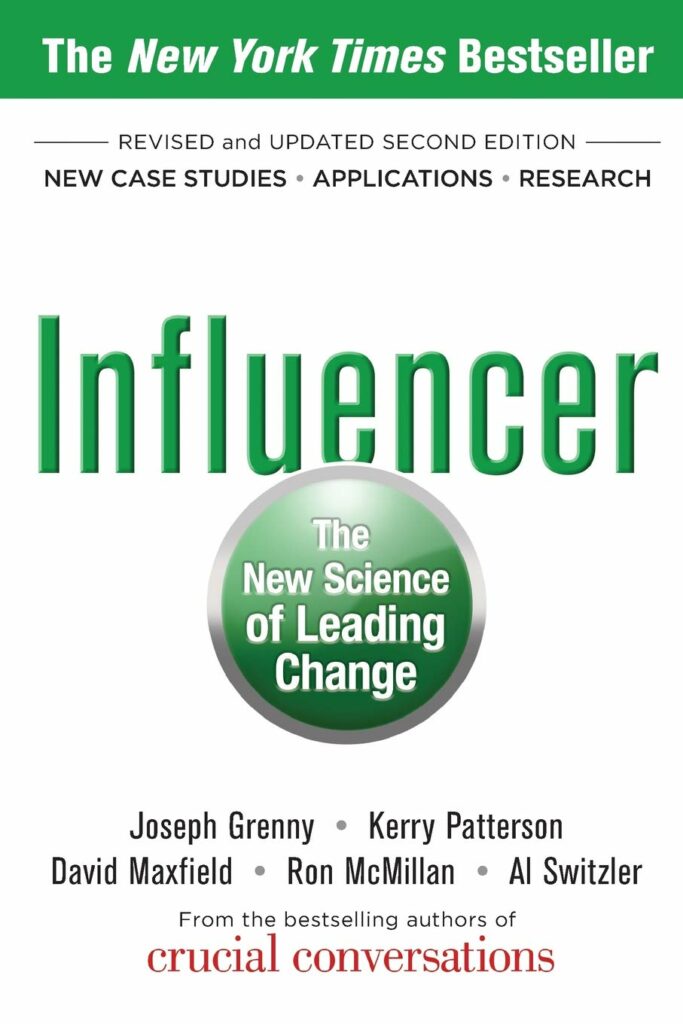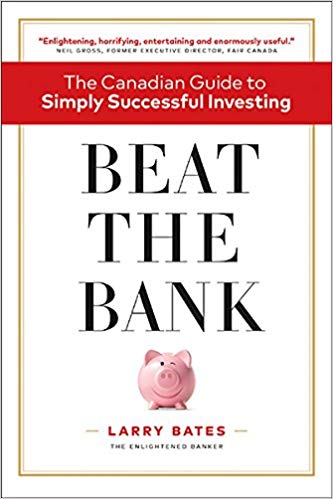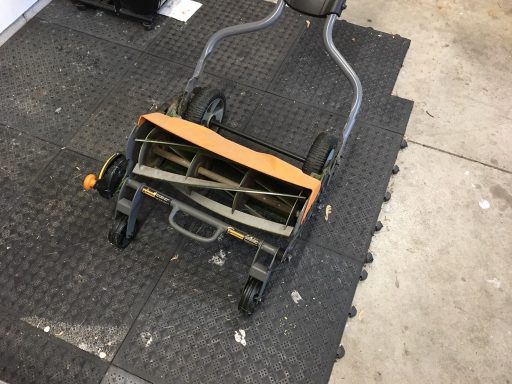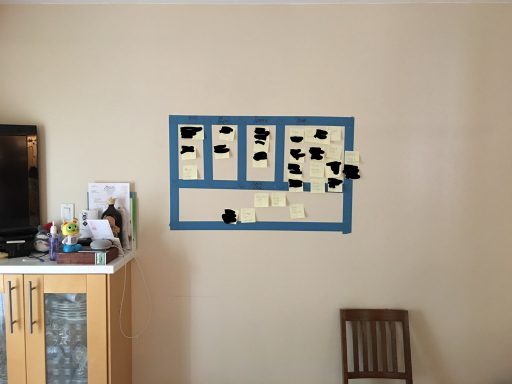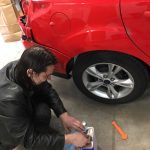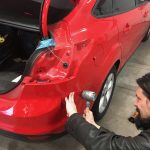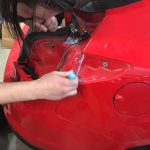Я подобрал эту книгу, так как много раз о ней слышал, да и Рой Ошеров хорошо отзывался. Я считаю себя здоровым скептиком, однако после первой главы я двинул в сторону глубокого скептицизма. Мне лично не пришлась по вкусу подача: все проблемы можно решить если купить книгу, прочитать её, практиковать ремесло, стать мастером влияния, получить докторскую, найти проблему, получить бюджет и наконец решать проблему до победного конца! Это не первая книга, которая на протяжении пары глав «сама себя продаёт». В одних книгах запугивают — аля: «ты пропадёшь без этого» или «не упусти возможности», а тут «все можно исправить — проблема не в силе воли, а проблема в умении».
Однако книга все же интересная и тут я не говорю «верьте всему написанному», я говорю «дайте шанс». Книга содержит довольно много полезных советов, подкрепленных историями и примерами. В центре всей концепции лежит шесть основных принципов влияния:
- Личные мотивации
- Личные способности
- Социальные мотивации
- Социальные способности
- Структурные мотивации
- Структурные способности
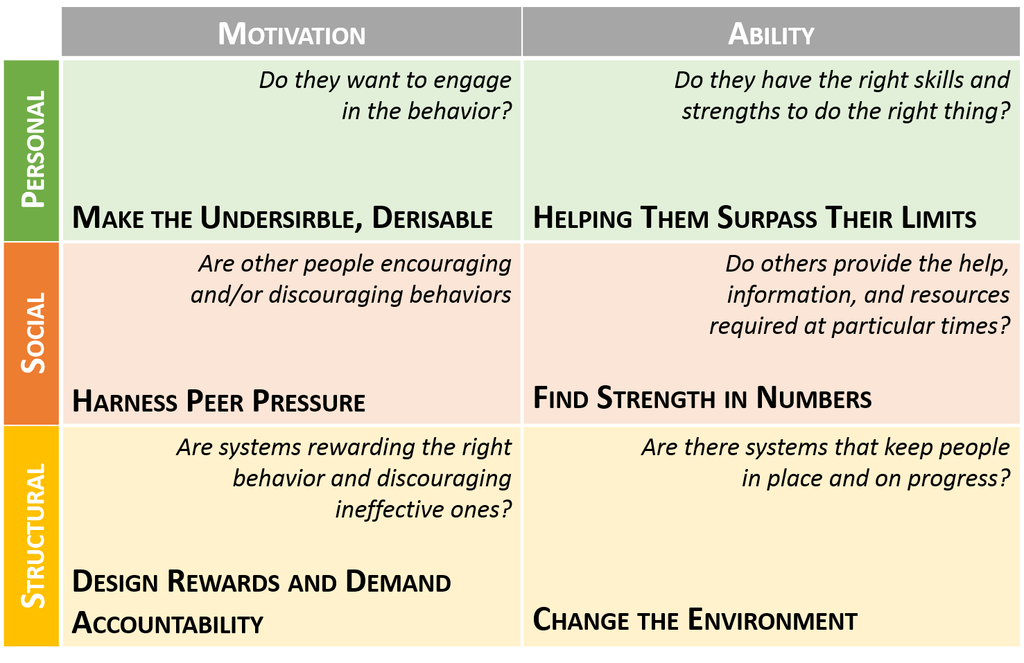
Авторы объясняют, что суть любого поведения всегда сводится к выше описанным факторам. Чтобы стать “властелином влияния” нужно овладеть всеми шестью принципами. Однако, не всегда нужно использовать все принципы, изначально нужно понять какие принципы поведения являются основными и какие принципы помогут это исправить. Чем сложнее проблема, тем больше принципов влияния нужно использовать одновременно!
На персональном уровне авторы отбрасывают идею воли (одним дано, другим нет) и утверждают, что само-контролю можно научиться, используя нехитрые трюки. Например: если вам очень хочется шоколадку, то можно отвлечь свое сознание мыслями о другом или играми. В таком же ключе можно бороться с раздражением и яростью, если чувствуете что «надвигается» тут же забросьте свой мозг какой-нибудь интеллектуальной задачей, да по-сложнее. Люди часто занимаются «не натуральными» занятиями — тем, что им не свойственно (например, чистка зубов), трюк в том чтобы сделать это занятие желаемым. В этом ракурсе человеку нужно ответить только на два вопроса: стоит ли оно того? И могу ли это сделать? Если ответ «да» на оба вопроса, то человек будет это делать!
Интересный и не маловажный (из личного опыта) путь изменения сознания как одного так и группы людей это викарный опыт. Викарный опыт применяется там, где вы хотите поменять поведение, но вы не можете заставить/убедить человека попробовать что-то самому и/или с помощью помощника. Вместо этого вы можете детально продемонстрировать видео записи или в живую как что-то делается или происходит. Таким образом зритель может получить опыт, при этом сам ничего не трогая.
На социальном уровне “игра” переходит на следующий уровень. Как ни странно, но люди — социальные животные и, соответственно, восприимчивы к соц. давлению, поэтому считаются с мнением лидеров / уважаемых в обществе людей. Один из подходов — найти лидеров и внедрять изменения через них — “если лидер так делает, то…”. Так же можно использовать групповую ответственность — все помогают и отвечают друг за друга, однако тут нужно убедиться в возможности открытого и безопасного обсуждения. Если ты видишь проблему, то она моментально должна быть вынесена на обозрение — никакого кода молчания! Так же не стоит забывать о простом методе “пряника и кнута”, но с ним нужно быть очень тактичным и острожным. Потенциальная проблема с “пряником” заключается в том, что она может привить неправильное поведение, например: раздаем “пряники” за перевыполнение плана — штампуем больше, качество меньше и в итоге компания несет убытки. Момент с кнутом: если не готов хлестать, то не угрожай. Люди очень быстро “схватывают” ваше бессилия и это может привести к пониженной продуктивности с вытекающими последствиями. Тут мне вспоминается книга: “Сначала надо нарушить все права”
Структурный уровень один из моих любимых по одной простой причине — чисто инженерский подход, который может легко пережить поколения! Многие советы приходят из мира массового производства, как в книге “14 принципов Тойоты”. Если сделать правильную архитектуру и/или устройства, то люди будут использовать их без какой-либо задней мысли, следуя заданному поведению. Тут поделюсь личным опытом: когда на работе решили повышать качество кода и установили автоматическую систему анализа, то люди резко стали смотреть на ошибки и исправлять найденое. И тут отмечу — да, система не идеальная, и знающие программисты легко могут “танцевать” вокруг неё! Однако стоит обратить внимание на 3 очень важных фактора:
- Никому не хочется много танцевать, проще смириться и писать код по-лучше.
- Система анализа предоставляет результаты в простой и доступной всем форме — очень легко найти и понять на что она жалуется.
- Все программисты просматривают код друг друга.
По отдельности каждый фактор не несет большой пользы, однако взятые вместе, предоставляют эффективное устройство для нахождения и исправления ошибок.
Итого:
+: Простое и доступное изложение
+: Примеры и байки
+: Обсуждение каждого принципа
+: Много пересечений с уже пройденными материалами, плюс к доверию?
-: Книга коротка относительно материала – создается ощущение, что нужно “докупить” опыт на отдельных семинарах
=: Материал довольно интересный и, если у вас есть время, то рекомендую для общего развития. Я считаю, книга будет полезна тем кто находиться в позиции, где можно и нужно что-то менять.
Название: Influencer – the new science of leading change
Авторы: Joseph Grenny, Kerry Patterson, David Maxfield, Ron McMillan, Al Switzler
Обложки:
